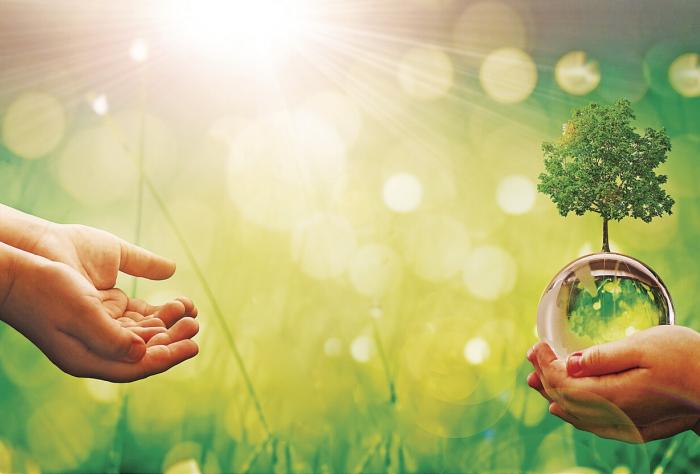
The Natural environment of Panama can be pivotal for entire Planet.
- By : James Bryson
- Category : Conservation, Environmental

I constantly pound the drum that we live in a very unique and diverse region of the globe. There are things in Panama that are distinct and relegated to our republic and should be protected at all costs. As PNO covered the logging in Darien, coastline cleanup, over fishing, among others,……..this article delves deeper into the positives that comes from protecting the environment.
Through the series of deliveries of this section it has been communicated that science is a key piece in the generation of environmental knowledge at global, regional and local levels. Hence what was exposed in the delivery, “Science: key element in the restoration of ecosystems”, which details the new commitment of the United Nations Environment Program (UNEP), known as the call for the new decade of the United Nations (UN) for the restoration of ecosystems, Great opportunity for food security and climate action.
The delivery described indicated that this description is key, since it is proposed that UNEP creates the United Nations decade for ecosystem restoration, declared by the UN General Assembly, because it aims to increase on a large scale the restoration of degraded and destroyed ecosystems, as a proven measure to fight climate change and improve food security. water supply and biodiversity.
The United Nations indicates that the degradation of terrestrial and marine ecosystems undermines the well-being of more than 3.2 billion people and costs approximately 10% of annual global GDP in loss of species and ecosystem services.
When key ecosystems disappear, many ecosystem services essential for food and agriculture are quickly lost, including freshwater supply, protection from natural disasters, and the provision of habitat for species such as fish and pollinators.

The Food and Agriculture Organization of the United Nations (FAO) in its first global report on the state of the biodiversity that underpins our food systems, has alerted nations that species associated with biodiversity, such as bees and fish, are seriously threatened, affecting the food chain of other species. like humans.
FAO calls on populations and their governments because biodiversity for food and agriculture includes all plants and animals, wild and domestic. That is, they all provide food, feed, fuel and fiber.
In addition, it includes the myriad of organisms that support food production through ecosystem services, which is called “associated biodiversity”. Within it are all the plants, animals and microorganisms, such as insects, bats, birds, mangroves, corals, seagrasses, earthworms, fungi and bacteria that inhabit the soil, which maintain fertile soils, pollinate plants, purify water and air, keep fish and trees healthy, and combat pests and diseases of crops and livestock.
This is the justification for why the UN is committed to ecosystem restoration, a topic that was addressed in the delivery, “Coastal marine areas and their ecosystem value threatened by river pollution”, which explains why coastal areas are important.

This is explained by detailing that coastal zones are strips close to the areas where rivers flow and groundwater emerges before joining the sea. It is in these areas where there are ecosystems composed of wetlands, coastal lagoons, marshes, mangroves, wetlands, freshwater habitats, estuaries and riparian zones, whose interconnection promotes the exchange of nutrients with fresh water, dissolved solids, particles and living resources from the continents, creating habitats for various species and generating the ecosystem value of coastal zones by hosting them.
Each ecosystem service is associated with an ecosystem function, thus, mentioning them indicates first the ecosystem service and then its associated function. Thus, the nutrient cycle is associated with the storage and processing of nutrients for nitrogen and phosphorus fixation; waste treatment is associated with the removal and reduction of excess nutrients and pollutants; The regulation of alterations is associated with the cushioning of the impact produced by climatic alterations such as sea level rise, which allows protection in coastal areas from the impacts of storms, floods and support in the recovery of droughts.
The ecosystem food service is associated with the first extractable productivity, like the food that is associated with coastal aquaculture. The refuge is associated with the generation of habitat and protection of biodiversity of migratory species, among others.
The services provided by coastal aquatic ecosystems have been accounted for globally, based on the estimated costs of reproducing them in an “artificial biosphere” at USD $11.4 trillion.
Consequences and management of pollution for populations in coastal areas
About half of the world’s population is located less than 60 kilometers from the coast, a population that is affected by its own economic and industrial activities, since the pollution caused by anthropogenic activities impacts the health of ecosystems. An example of this is the one pointed out in the ECLAC document, where it is mentioned that untreated waters are introduced into the bays in Panama through rivers to mangroves.
A solution to the consequences of pollution in marine-coastal areas is the application of water management by basins, since from this approach water quality and the protection of ecosystems are managed as essential elements in the integrated management of the basin, thus allowing pollution control.
Evidence of application of science in the restoration of coastal zones
The two aforementioned deliveries, in Planeta, have been consolidated and refreshed to present the bay of Parita program, which is an initiative executed in the Republic of Panama and promoted by the Ramsar Regional Center for Training and Research on Wetlands for the Western Hemisphere (Creho).
As detailed by the digital platform of the Secretariat of Science, Technology and Innovation (Senacyt) imagina.senacyt.gob.pa, and its author José Guillermo Sánchez, this initiative seeks to contribute to the conservation and rational use of wetlands in the Western Hemisphere.
This intervention based on viencia articulates collaborative research and technical cooperation between different water users, so that synergies are generated that guarantee the integrated management of water resources, the optimization and sustainable use of water, the socialization of scientific information and the search for consensus for the valorization of environmental services at the level of hydrographic basins.
Thus was born his first project, “Restoration and recovery of mangrove and albino areas of the lower part of the La Villa river basin”.
This innovative project unites the detailed in both deliveries of Planeta, because it uses scientific knowledge to implement restoration and recovery practices of mangrove and albino areas in the lower part of the La Villa River, so that wetland ecosystems in the dry arc region, located in the provinces of Herrera and Los Santos, can be managed in an integral and sustainable way in the marine-coastal zones of the Panamanian Pacific.
Thus, Panama takes an important and timely step through science that supports its sustainable development in the region.



No Comments